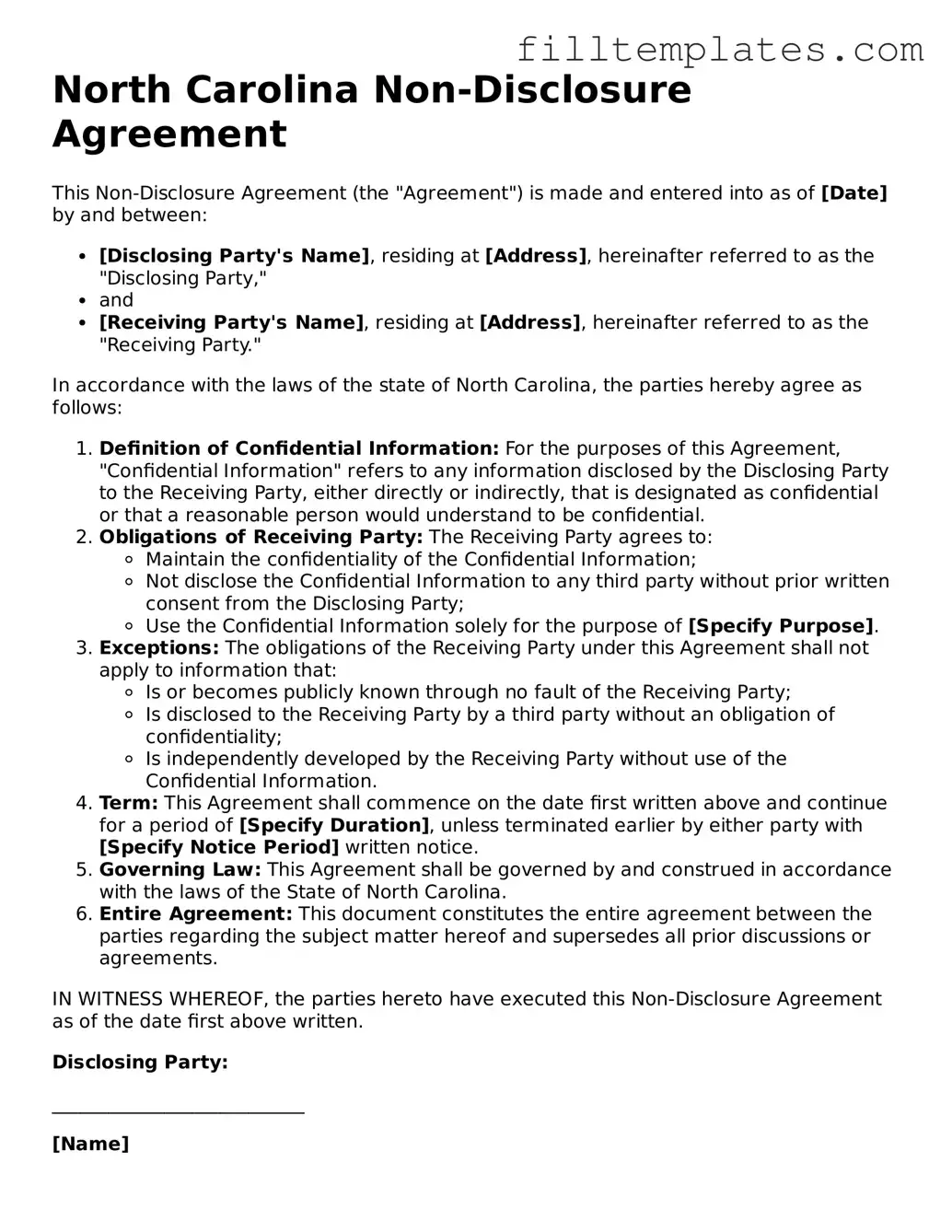North Carolina Non-Disclosure Agreement
This Non-Disclosure Agreement (the "Agreement") is made and entered into as of [Date] by and between:
- [Disclosing Party's Name], residing at [Address], hereinafter referred to as the "Disclosing Party,"
- and
- [Receiving Party's Name], residing at [Address], hereinafter referred to as the "Receiving Party."
In accordance with the laws of the state of North Carolina, the parties hereby agree as follows:
- Definition of Confidential Information: For the purposes of this Agreement, "Confidential Information" refers to any information disclosed by the Disclosing Party to the Receiving Party, either directly or indirectly, that is designated as confidential or that a reasonable person would understand to be confidential.
- Obligations of Receiving Party: The Receiving Party agrees to:
- Maintain the confidentiality of the Confidential Information;
- Not disclose the Confidential Information to any third party without prior written consent from the Disclosing Party;
- Use the Confidential Information solely for the purpose of [Specify Purpose].
- Exceptions: The obligations of the Receiving Party under this Agreement shall not apply to information that:
- Is or becomes publicly known through no fault of the Receiving Party;
- Is disclosed to the Receiving Party by a third party without an obligation of confidentiality;
- Is independently developed by the Receiving Party without use of the Confidential Information.
- Term: This Agreement shall commence on the date first written above and continue for a period of [Specify Duration], unless terminated earlier by either party with [Specify Notice Period] written notice.
- Governing Law: This Agreement shall be governed by and construed in accordance with the laws of the State of North Carolina.
- Entire Agreement: This document constitutes the entire agreement between the parties regarding the subject matter hereof and supersedes all prior discussions or agreements.
IN WITNESS WHEREOF, the parties hereto have executed this Non-Disclosure Agreement as of the date first above written.
Disclosing Party:
___________________________
[Name]
Receiving Party:
___________________________
[Name]
